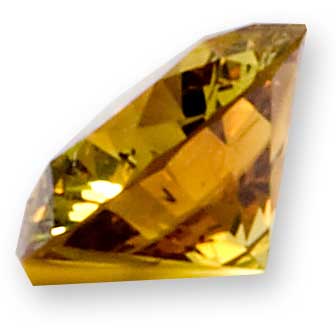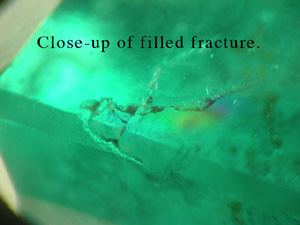Under the "covers"
 A personal jewelry policy has very broad coverage. Perils covered look simple. Exclusions look simple.
A personal jewelry policy has very broad coverage. Perils covered look simple. Exclusions look simple.
Although the language of the policy is very specific, the consumer's or agent's interpretation of the language may not be complete.
Here are some real-world examples to help expand understanding of what's NOT covered in the jewelry policy.
Unmounted gems
To many, this may come as a surprise. If a client walked in with a pouch of loose gems, the agent may or may not identify them as excluded property under a personal jewelry policy.
Or consider this scenario: A man plans to give his fiancée an engagement ring. He carefully selects and purchases the perfect diamond. He puts the diamond in his bank vault box, while he shops for an appropriate setting. Once he finds the right setting, he retrieves the gem from the bank box. But on arriving at the jeweler, he discovers that the diamond has been lost somewhere between the bank and the jeweler. Mysterious disappearance is a covered peril, but—alas—this was not (yet) a piece of jewelry. The unmounted gem was not covered.
Another situation sometimes arises due to a regrettably common scam. In one case, a woman received a phone call from a convincingly authoritative source offering to sell her a $4,700 ruby "for investment purposes." She was persuaded that it would soon be worth much more and paid the money. The stone arrived in a sealed packet "to retain its value." Regardless of its purported value, the price she paid, and the paperwork that came along with the purchase, the unmounted gem could not be covered.
(Eventually the woman had the stone examined. It turned out the gem was worth much less than she paid, its certifying papers were fake, and the selling source was bogus. For a deeper look at this kind of mail-order scam, see Telemarketing Gems.)
Wear & Tear
One insurer received a damage claim on a bracelet whose band was becoming detached from its clasp. Close inspection of the piece revealed no evidence of a blow of any kind. The insured said she just happened to notice the problem and had no memory of any event that would have caused it. She'd been wearing the bracelet for 15 years. When she brought it to her jeweler for repair, the jeweler suggested she file a claim.
The insurer sent the bracelet to a gemological lab for inspection. The lab determined that the damage, though reparable, was caused by wear and tear. The claim was denied.
Inherent Vice
 Inherent vice is "any quality in the property that causes it to damage or destroy itself." Both the term and its meaning sound very serious and even scary: How could jewelry possibly destroy itself?
Inherent vice is "any quality in the property that causes it to damage or destroy itself." Both the term and its meaning sound very serious and even scary: How could jewelry possibly destroy itself?
Gemstone inclusions and enhancements are major culprits. Fracture-filling, for example, is a process in which a gem with fractures is made more visually appealing by having the fractures filled with a non-gem material. When that fill material breaks down, the gem will look damaged. But the breakdown of the fill material merely reveals the stone's existing fractures. This is not damage for which the insurer is liable.
Similarly, a color enhancement that deteriorates over time, leaving the stone with its original less-appealing color, is not damage for which the insurer is liable.
Gem shapes with
sharp points

Princess cut

Pear cut

Marquise cut
Gem enhancements are often not disclosed on appraisals, sales receipts or marketing materials. That's why we recommend that insurers have all damaged jewelry examined by a reliable lab independent of the seller to determine whether the claimed damage is actually due to wear and tear/inherent vice.
Gems shapes with sharp corners, such as the princess cut, can also be considered as inherent vice because such corners, if unprotected, can easily get chipped. In fact, they are often chipped in the setting process. Chipped points are especially likely to occur in jewelry exposed to knocks, such as rings and bracelets.
See Inherent Vice/Wear & Tear for a deeper look.
New-Purchase Coverage
This is one that may slip by. The policy gives automatic coverage (up to specified limits) for newly purchased jewelry for 30 days. But — time flies. The insured may feel they have plenty of time to report the purchase and add the jewelry to their existing schedule, but then forget to do so. Or: it's a gift, and they are waiting to present the gift to the recipient, and then will have it insured. Or: create your own scenario, in which the 30-day time limit elapses and then a loss occurs. Once those 30 days elapse (without reporting the purchase to the insurer), automatic coverage ceases.
Safe-Keeping
The insured receives coverage for his expensive Rolex on condition that it is kept in his wall safe when it's not being worn. But he sometimes leaves it on the dresser, and one night it's taken in a burglary. He did not adhere to the terms of the contract, so the stolen watch is not covered.
FOR AGENTS & UNDERWRITERS
Be on the lookout for inherent vice. For gem jewelry, the appraisal should state any treatments/enhancements, or it should state that the gem is untreated.
The breakdown of a gem treatment such as fracture-filling is not damage for which the insurer is liable.
FOR ADJUSTERS
Normal wear and tear and inherent vice may look like damage to the insured or to an insurance professional.
For all damage claims, regardless of value, always have the jewelry examined by an independent expert. This means a disinterested gem lab staffed by qualified gemologists. The lab should report to you not only existing damage but also characteristics of the stone, gem treatments, or any other conditions that would have made the gem vulnerable to that damage, and any evidence of wear and tear on the gem or jewelry.
In cases of gemstone damage, an alternative is to have the stone removed from the setting and sent to GIA for a report on the damage. GIA is widely regarded as the final arbiter in disputes, and a GIA determination avoids the ill-will of a legal battle.Either of these choices involves some cost, but that should be regarded simply as part of the loss adjustment expense. These costs will be more than offset by significantly improved loss ratios.
©2000-2024, JCRS Inland Marine Solutions, Inc. All Rights Reserved. www.jcrs.com

